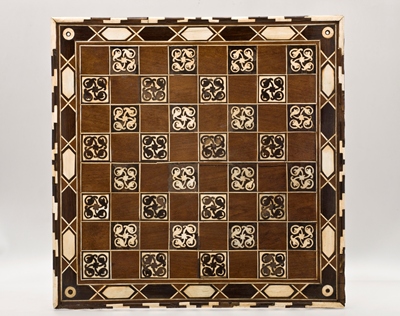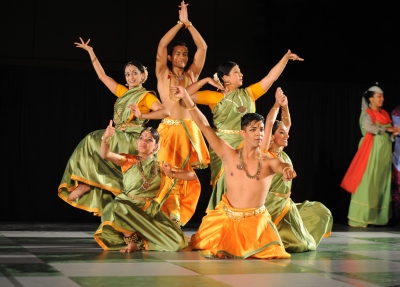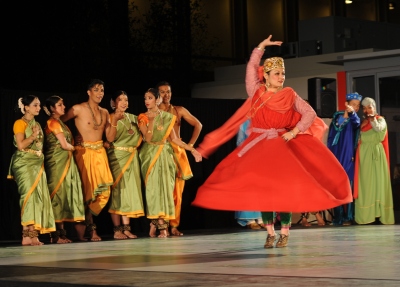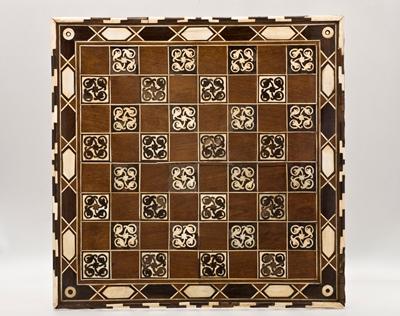A few months ago, the Jamal Dance Art Theater was approached by LACMA to conceptualize a performance in conjunction with Gifts of the Sultan: The Arts of Giving at the Islamic Courts. Jamal, the artistic director of the company, explored the exhibition and decided to focus on the exchange of chess and backgammon between India and Persia. He decided to use Bharatanatyam (a classical Indian dance style) as the dance to represent India, and he asked me to choreograph a section for the performance. Since I am both a member of the company and an employee at LACMA, I’m especially excited for the performance to take place at LACMA this Saturday and Sunday.

Chessboard, Egypt, 14th or 15th century, Benaki Museum, Athens, photo courtesy Benaki Museum, by Tsonis
The performance itself is structured to show the arrival of Indian emissaries, who are welcomed to the Persian court with gifts and a court dance. The emissaries then perform a Bharatanatyam dance for their hosts, the portion which I choreographed. I used the original game of chess and its evolution to the modern version of the game as my inspiration.

Shatrang va Takhta-i Nard, Jamal Dance Art Theater, Shahla Sepehr Bebe / Bebe Image Studio
The original game is believed to only have had four pieces: infantry, cavalry, elephants, and charioteers. These four pieces evolved into modern chess’s pawns, knights, bishops, and rooks. With a few abstract Bharatanatyam sections thrown in, the Indian dancers show the Persian court the basic movements of the various chess pieces.
After another brief discourse between the Persian hosts and their Indian guests, and a fantastic solo performed by Karen Ochoa, the game of chess is instructed and then a live chess game is played. In my opinion, this is the climax of the performance, and where Jamal’s brilliance as a director comes through.

Shatrang va Takhta-i Nard, Jamal Dance Art Theater, Shahla Sepehr Bebe / Bebe Image Studio
Given the wide range of styles and ethnicities of his dancers, Jamal decided that each of us should take our own forte and use that to inform our movement as the various pieces we represent on the stage. Collectively, we have ballet, modern, jazz, b-boying, West African, Ballet Folklorico, Flamenco, Persian folk, Armenian folk, Kuchipudi, and Bharatnatyam dance styles represented. It’s a very exciting section to perform as a dancer, and is sure to be a crowd-pleaser.
Arun Mathai, Financial Analyst



